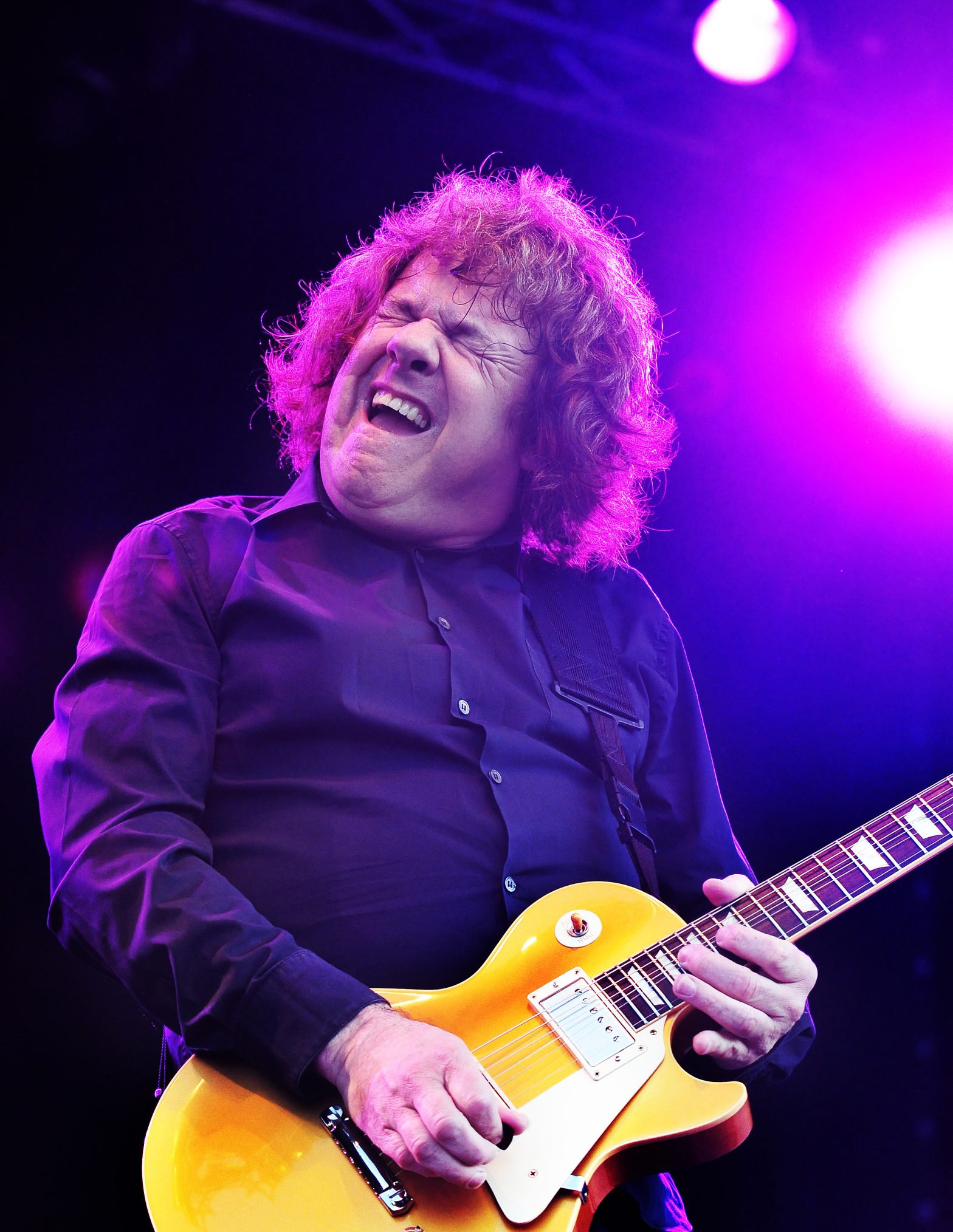It was a huge shock to blues and rock aficionados alike when Gary Moore passed away on February 6, 2011, following a devastating heart attack. Despite not receiving that much fanfare among American music fans, Moore was nonetheless one of the most esteemed guitarists in the British music scene, playing a variety of genres in a career spanning over four decades.
Moore was born on April 4, 1952 to Bobby and Winnie Moore in Belfast, Northern Ireland. His first guitar influences included Jimi Hendrix, Eric Clapton and original Fleetwood Mac leader Peter Green. Family problems prompted Moore to leave home as a teenager and move to Dublin. Here he would form a blues-rock band called Skid Row, which also featured vocalist Phil Lynott. Four years later, the two would be reunited, when Moore replaced Eric Bell in Lynott’s up-and-coming band Thin Lizzy.
Moore’s first stint with the band would last just one year, but that didn’t matter. He had a burgeoning solo career going for him, and he did remain friends and co-collaborators with Lynott for most of the ‘70s. One of those collaborations was “Parisienne Walkways”, a song that gave Moore his first big hit on the UK Singles charts, reaching #8 in 1979. During the late ‘70s, Moore was also busy doing session work for artists like Rod Argent and Andrew Lloyd Webber and playing full-time with prog-rock band Colosseum II.
Moore would return to Thin Lizzy for a third time in 1978 (he had briefly toured with the band in 1977), but this third stint proved to be the most toxic. This time, he was replacing Lizzy’s temperamental, hard-drinking guitarist Brian Robertson (the same man he temporarily subbed for in ’77), but tensions soon began to erupt between Lynott and Moore. Disturbed by the increasing drug use and infighting within the band, Moore quit Thin Lizzy for the final time in July 1979, right in the middle of their ongoing American tour.
The ‘80s were still busy for Moore, but most of his albums were now leaning towards the pop-metal sound most popular in that decade. By 1990, Moore decided to return to what he loved playing the most – the blues. The 1990 album Still Got the Blues finally gave Moore some recognition Stateside as a solo artist – the title track only peaked at #97 on the Billboard Hot 100, but still remains a staple on classic rock-oriented stations in America. Moore would stick to the blues for most of the ‘90s, but did dabble with electronic sounds on his last two albums of the decade, 1997’s Dark Days in Paradise and 1999’s A Different Beat. His 2001 release Back to the Blues marked a welcome return to the blues, a path he would continue on till his untimely death last year.
Despite the frequent genre-hopping, Moore is still best known as one of the United Kingdom’s most talented blues guitarists ever. It was the blues that got him interested in playing guitar, and at the time of his death, he was firmly rooted in the music he loved so much since his boyhood days. Fellow musicians continue to remember him not only as a great musician, but also as a wonderful human being and a true friend.

Leave a Reply